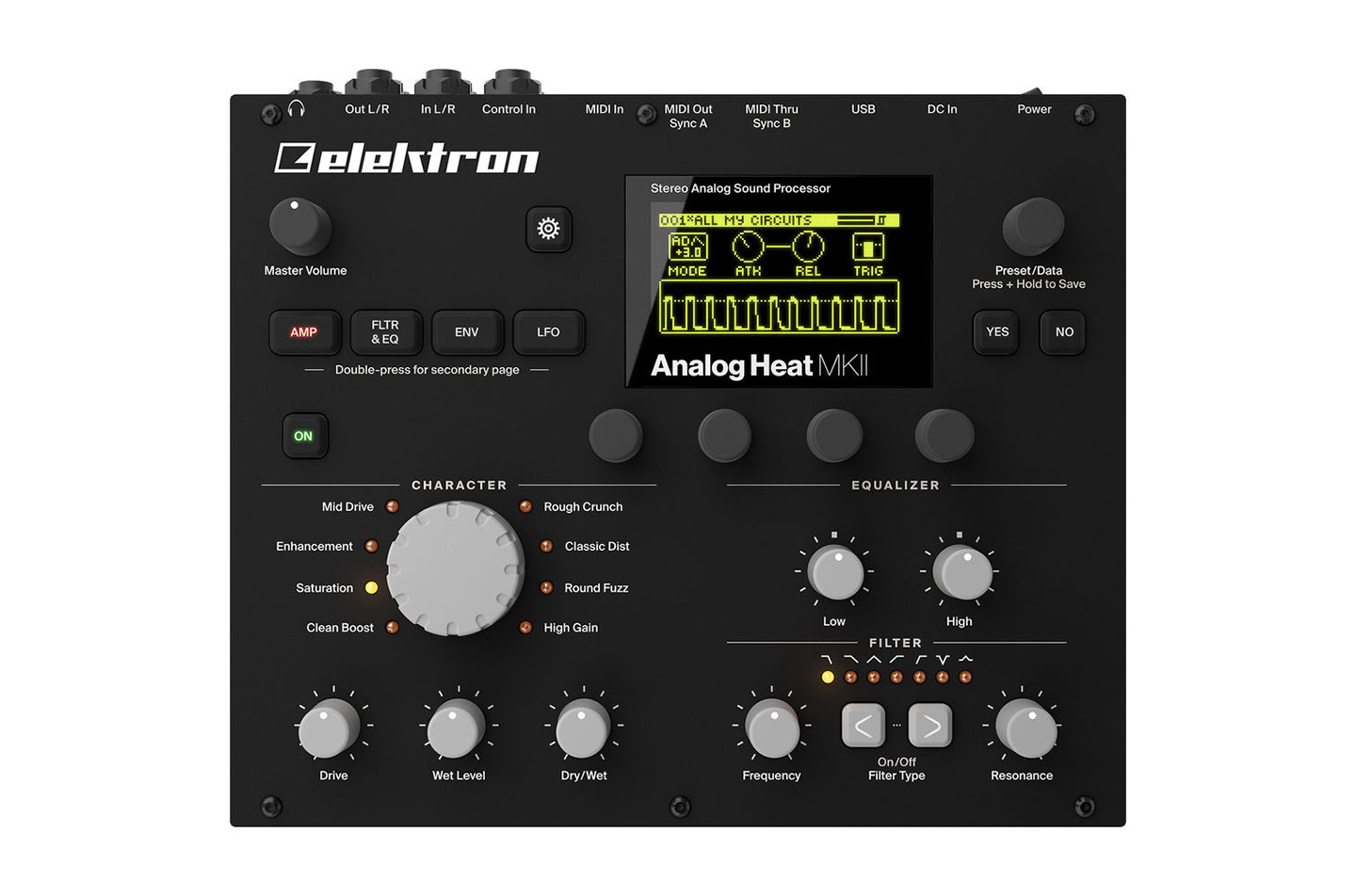- Eight flavours of overdrive to heat up your sound.
- When Elektron first announced the Analog Heat—and its pared-down, stombox-sized sibling, the Analog Drive—in late 2016, I was somewhat confused. Given their high standing among electronic artists and producers, the decision to flirt with what seemed like guitar effects was unexpected. However, with the launch of the Analog Heat MKII two years later, it's apparent that the device has found enough fans among producers to warrant an update.
At first glance, there aren't many differences between the MKII and the original model. The eight distortion circuits are unchanged. With the exception of the Settings menu, all the controls are in the same places as before. The buttons have been upgraded from the small circle style to the larger, backlit LED rectangles that first appeared with the Digitakt. The nicest thing about this is that it's now much easier to see whether bypass is activated, indicated by the word ON in bright green. The other big change here is that the screen has been upgraded to a significantly larger OLED. This makes a huge difference, particularly in live use, as the extra space is now used to display in- and output level meters as well as the envelope and LFO waveforms in realtime. With the MKI, this sort of visual feedback was only possible while hooked into Overbridge (a topic we'll come to later), so it's helpful to have it as a standalone feature. The last minor but notable change is that incoming mono audio is now split to both outputs rather than going out on a single channel. This is particularly useful when using the Heat to process analog monosynths, as it allows you to take full advantage of its stereo effects.
The range of effects and signal processing achievable with the Analog Heat is impressive, considering it's essentially a distortion box. It doesn't have a sequencer and its interface is pretty pared down by Elektron standards, but the combination of an LFO, envelope generator and expression pedal/CV inputs make it feel much more alive than a set-and-forget style processor. Each of its eight distortion circuits achieve a different tone, from the self-explanatory Clean Boost to the upper-octave harmonics of Round Fuzz. When used in moderation, the distortion circuits liven up a dull mix and boost thin-sounding percussion. I really enjoyed running pure sine tones through them and using the Analog Heat as a sort of waveshaper module.
Activating the seven-mode, self-oscillating filter opens up even more processing possibilities for the adventurous knob-tweaker. The filter page has hardwired options for envelope and LFO modulation of the cutoff frequency, but my favorite parameter to mess with was Frequency Pan, which splits the filter frequency per channel and sometimes has a vocoder-like effect on signals.
The next parameter page controls the envelope settings. You actually have three options for envelope generation here: attack-release, attack-decay or the bare amplitude envelope follower signal. The envelope generator can be triggered either by passing an arbitrary threshold level, manually via a key-press combination or an incoming gate signal through the CV inputs. This section also has an interesting filter for setting the frequency response of the envelope follower. The envelope has three mod destination slots, but it also can be used for clocking and re-triggering the LFO. This makes running the LFO in one-shot mode useful as a second envelope with another three mod destinations of its own.
Overbridge was one of the big selling points of the original Analog Heat. Being able to easily automate all of the device's parameters from a DAW and take advantage of the built-in sound card makes it seamlessly integrate with a software setup. Unfortunately, the MKII is not compatible with the current version of Overbridge, so I wasn't able to test it as a sound card or hardware VST. This was only slightly frustrating, as it forced me to focus on the Analog Heat as its own beast rather treat it like any other filter/saturator. Regardless of when Overbridge support turns up, producers looking for a versatile sound-sweetening tool should find themselves perfectly content with an Analog Heat. But despite the apparent simplicity, it rewards curiosity and can produce unexpected results.
Ratings:
Cost: 3.9
Versatility: 4.0
Ease of use: 4.0
Sound: 4.5
